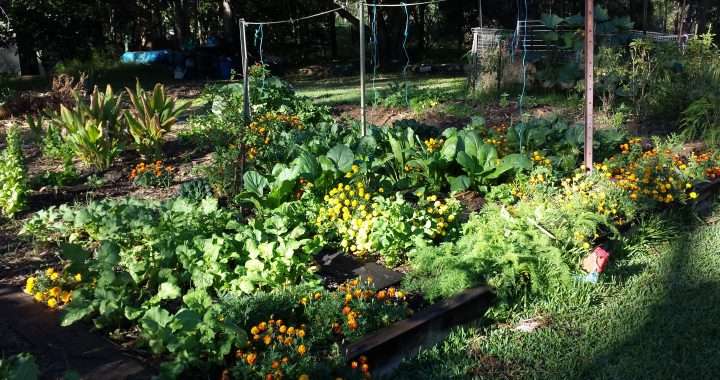
Growing marigolds and nasturtiums in your vegetable garden – essential for any organic garden
Author : My Food Garden
Growing marigolds and nasturtiums in your vegetable garden helps control insects, adds beauty and is a tasty and healthy addition to your dinner plate.
I have used them in my food gardens for many years. Both plants are prolific seeders once their long flowering period finishes and I have noticed to my delight that as they re-seed, some different flower colours begin to appear.
Insect impact
Leaf flower and fruit eaters – The pungent smell of marigold flower and leaf discourages aphids from hanging around to feast on nearby crops. Nasturtiums repel whiteflies, squash bugs, aphids, many beetles and cabbage loopers. Nasturtiums are ideal companion for tomatoes, cucumbers, kale, kohlrabi, collards, broccoli, cabbage and radishes. Favourite crops of those pesky insects.
Root eaters – Marigolds are particularly helpful in minimising the attack of harmful nematodes that cause bumps on your plant roots and reduce plant vitality. A past blog of mine talks about other tactics in dealing with nematodes.
Pollinators – The flowers of marigold and nasturtium attract bees to your garden, essential where you are growing crops that need pollinators such as cucumber, zuccini, capsicum and squash.
Adding to your meal
Marigold flowers and leaves can be eaten. They have strong flavour and are rather bitter. I feel its best to mix them with other plants. Here are the health benefits of eating marigolds.
The only part of the nasturtiums you can’t eat are the roots. The flowers have a delicate and spicy flavour with red flowers the hottest and pink flowers the least spicy. Flowers can be used in salads as can the leaves. I always pick a leaf or flower to taste when I am in the garden. The seeds can be pickled and are called capers. You can read about the health benefits of eating nasturtiums here.
Beauty and design
There is no doubt that having flowers in your garden impacts the feeling you have when walking around the space. I feel that flowers speak much faster to the soul because of their beauty. By growing marigolds and nasturtiums, you can also create form in the garden by placing the flowers in certain positions, for example, I tend to put them at the end of my beds to create an edge.
How to grow
Growing marigolds and nasturtiums is quite easy. They are very hardy plants, In my sub-tropical climate they grow over long periods of time during the year. Soil should be reasonable with growing marigolds and nasturtiums and I think its best to provide them similar soil to what you provide for your vegetables. Here is a past article of vegetable garden soil. If you water them too much, you will get a lot more leaf than flower.
Marigolds grow as a bush, making them easy to control, whereas nasturtiums are more of a creeper and can take over a space if you let them.
Come along to one of our Workshops or talk to us about our Coaching service.
Authored by Peter Kearney – www.beta.myfoodgarden.com.au

